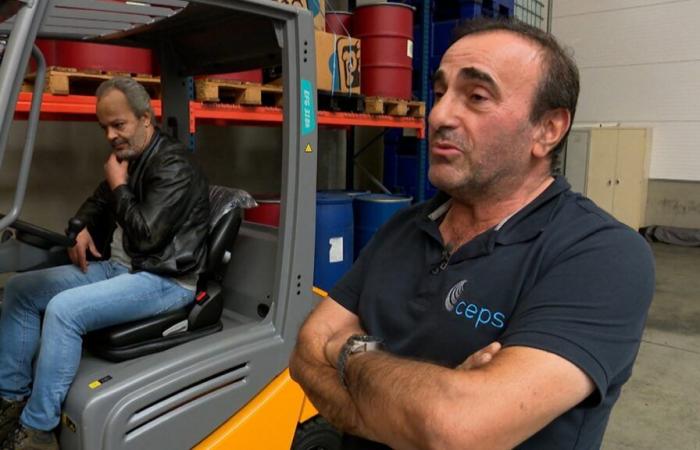The case of Audi Forest is not the first time that we have talked about “reconverting” a major industrial site and allowing its workers to find jobs again. In 2016, it was the Caterpillar factory in Gosselies that closed its doors. There too, several avenues had been discussed, such as the implementation of support. So, where are we 8 years later?
In the hangar of a training center in Marchienne-au-Pont, Vahittin has rediscovered the pleasure of work. After thirty years at Caterpillar, he is once again working as a logistics safety trainer. But the memories are still very much present: “Every day, every day. Thirty years of career on the Caterpillar site, forgetting that overnight, those are things that you don’t forget. There are good things that stayed there on site”he tells us.
In this company, several former Caterpillar employees found themselves. They experienced the hardships, but today, they have reinvented themselves. “We have to turn the page, keep the good moments in the photos, as we have seen, and then move on,” says Nino.
Frédérique Pouillart, the director: “Most of them have found work again, some have become self-employed. That’s also nice, it’s a great change of career. Some of them work in other regions too, some of them have gone abroad.”
A social earthquake
In September 2016, Caterpillar management announced the closure of the site. A real social earthquake that provoked the anger of the workers. A retraining unit was quickly set up for 1,598 workers. 64% of them will benefit from reintegration. According to the latest figures, 80% of the workers have finally found a job.
At the time, trade unionist Jean-Marie Hoslet feared the worst: “The first restructuring was an earthquake, here it is the apocalypse for the whole of Wallonia, it is not Gosselies which is concerned.”
But eight years later, he thinks that the damage has been limited, the training of workers has played a role, as have the hours. “Flexibility, courage and the fruits of their labor, yes. Many employers look for workers like that, and at Caterpillar, there were plenty of them.”he says.
What happens to the site?
Beyond the social aspect, it was the reconversion of a 93-hectare site that had to be managed. Two hoped-for megaprojects would never see the light of day: Legoland and the electric car manufacturer Thunder Power.
After looking for a single buyer, the site will finally be divided up, the buildings gradually destroyed. “They absolutely no longer correspond to the current real estate standard, because they had a configuration extremely specific to the previous activities.”explains Nathalie Czerniatynski, director of the intermunicipal IGRETEC. These buildings correspond to an older industry, “who used large volumes” she adds.
In the area, the concept of a single occupant is over, and here is what its future will be: “We will have three distinct areas, one that will be dedicated to leisure, so it could be several activities. A central part, more for everything that is logistics, production, handling, and a third part that will be an extension of the airport biopark.”
Eight years after the announcement of its closure, the Caterpillar site is still taking time to reinvent itself. It will soon welcome new workers.
audi brussels Audi Forest caterpillar unions Social earthquake








